The application revealed this week, entitled "Interactive Gaming with Co-Located, Networked Direction and Location Aware Devices," describes a gaming system on an iPhone that would create an augmented reality by using the device's camera and sensing the device's location and orientation. This same "reality" would be shared by other, nearby iPhone gamers, and positioning data of each iPhone would be shared wirelessly over Wi-Fi, Bluetooth or a cellular signal.
By sharing the exact position and orientation of another user's iPhone, this system would allow the gamer to actually see and track a player on the screen.
In one example given in the application, a virtual crosshair appears on the iPhone screen, overlaying a live video image captured by the iPhone's camera. In this game, users could "fire" at an opponent in their crosshairs, and the game would be able to track whether the other user was "shot" based on the shared location data.
The application describes a number of iPhones sharing their coordinates in a three-dimensional space, relying on the sensors within the handset, including accelerometers, gyroscopes, GPS and a magnetic compass.
Apple's gaming implementation would have users lay their iPhones, or other portable devices, down next to each other, flat on a table, in close proximity. This would allow the system to calibrate and create a fixed Cartesian coordinate in a three-dimensional space.
Users would then pick up their phone and could move about to play an interactive game. The handsets would wirelessly communicate with one another, sharing their location in real-time, and allowing for interactive activities like the ability to "shoot" an opponent.
The system could also be used in connection with accessories, which could make the experience even more interactive.
"The game devices can include attachments," the application reads. "For example, a 'gun' can be attached to a game device and used by a player to target other players in the real world game environment. In this case, the orientation of the 'gun' relative to the game device can be determined."
The patent filing notes that current iPhone games use the accelerometer to allow users to move the device control a game, like steering a vehicle. In these games, the user manipulates the iPhone in response to game action.
Apple's method would instead have the game react to the user's motion, tracking their position in a 3D space. The application notes that a variety of interactive games, including something like laser tag, could utilize the relative positions and orientations of devices to create an entirely new gaming experience.
The application was made public this week by the U.S. Patent and Trademark Office. It was first applied for in April of 2009, and is credited to Ronald Keryuan Huang, Rob Mayor, Isabel Mahe, and Patrick Piemonte.
 Neil Hughes
Neil Hughes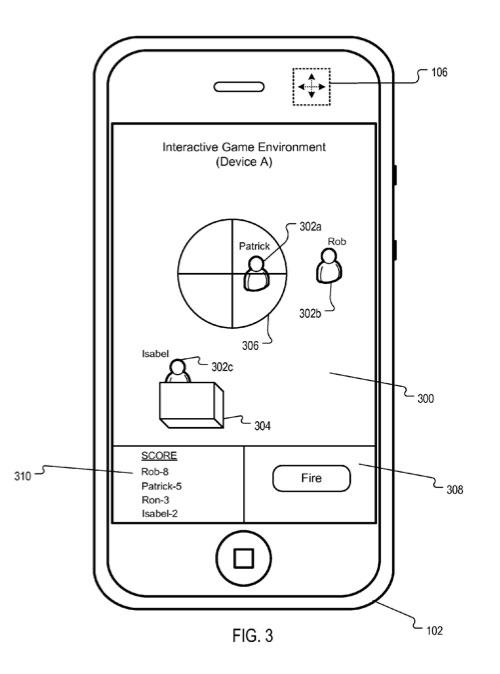
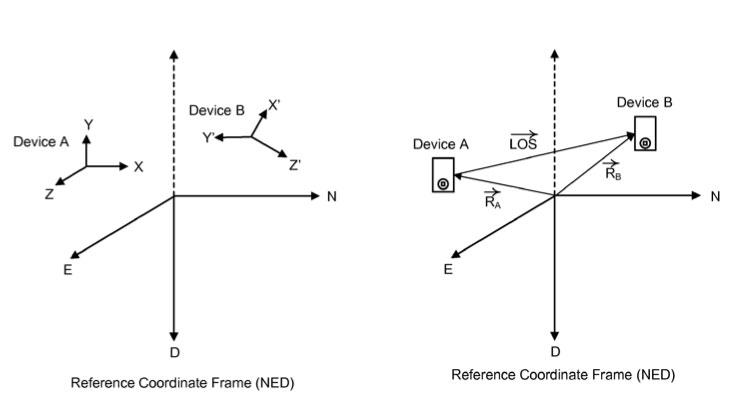


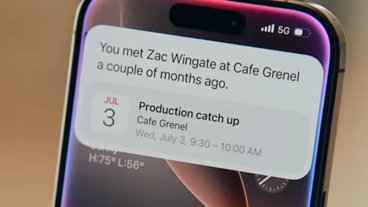
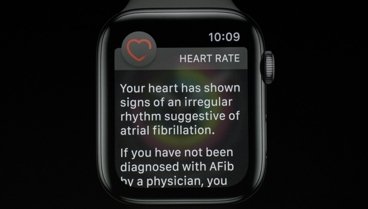



-m.jpg)






 Charles Martin
Charles Martin

 Amber Neely
Amber Neely
 Christine McKee
Christine McKee
 Malcolm Owen
Malcolm Owen

 William Gallagher
William Gallagher





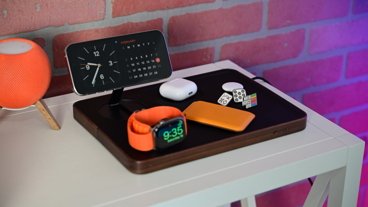


15 Comments
This is curious. I saw a youtube video for an augmented reality game that seams very similar to this idea a while back... I'll see if I can scrounge it up. It was supposed to be an iOS game, but I couldn't find it in the store at the time.
C
This seems like an awesome idea! Leave it to Apple to Lead in technological aspect of integrating several technologies together to make an amazing experience.
Looking forward to it!
Uhoh... I foresee another round of patient lawsuits in the future...
http://androidandme.com/2010/07/news...ts-on-android/
Uhoh... I foresee another round of patient lawsuits in the future...
http://androidandme.com/2010/07/news...ts-on-android/
That uses a play grid on which 3D characters are superimposed. Not really the same as what's being described here. Both augmented reality apps to be sure, but Apple isn't trying to patent "augmented reality" in general.
That uses a play grid on which 3D characters are superimposed. Not really the same as what's being described here. Both augmented reality apps to be sure, but Apple isn't trying to patent "augmented reality" in general.
I do see how they can be different, but at the same time, evolve into quite similar products. I hope this doesn't go into the patent wars realm as I would like to see this go cross-platform.
Humans vs. Zombies anyone?